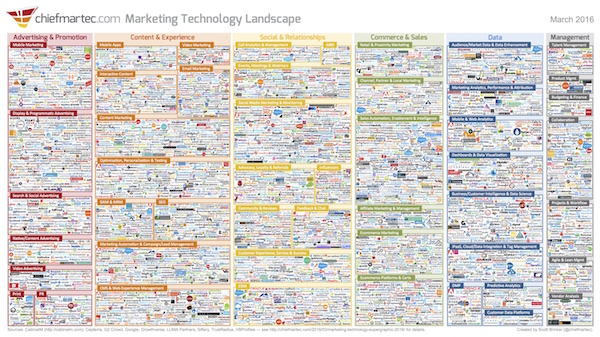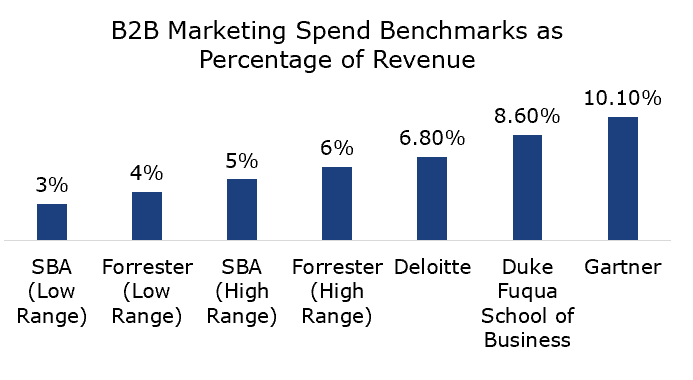Welcome to the third and final post in our series on maximizing the time you spend on marketing. Here’s what we’ve covered so far:
- How to Decide How Much Time to Spend on Marketing
- Four Steps to Build A Time-Saving Marketing Strategy
Now, it’s time to get tactical. Your goal during this stage is to structure your marketing channels so that you can “set and forget” them. In other words, build your marketing platform so that it’s always working for you in the background while you tend to sales and operations. To do that, let’s dive into the four tactics that will help you maximize the time you spend on marketing:
- Implement the Basics of Search Engine Optimization (SEO)
- Establish a Digital Advertising/Search Engine Marketing Presence
- Set up Your Marketing Automation System
- Prepare for Inbound Lead Generation
1. Implement the Basics of Search Engine Optimization
“SEO is like breathing. You just need to do it, every day.”
This quote is from Frank, our head of Digital Marketing, and it sums up the essence of search engine optimization. So many SEO books have been written, and so many more blogs have been posted on various SEO tips and recommendations, that the core of SEO can be obscure for the layman. But SEO’s three pillars are much simpler than they seem:

The three phases of SEO
- Optimize your website “under the hood” so that your pages have the strongest density of key terms you want to be known for in the right places in your site’s code (your URLs, your page titles, etc.)
- Publish regular content that includes your keywords, which will keep your site fresh in search results
- Get people to share your content and link to your website (ideally using your keywords in their links)
We recommend using Google’s excellent Keyword Planner tool to identify the target keywords you’ll use as the cornerstone of your search engine optimization strategy. Once you’ve got your SEO terms, review your website and make sure that those terms are reflected in the areas of your site such as your URLs, header tags, and internal links. After you’ve taken care of the basic nuts and bolts, it’s time to start creating new content. Set aside a day, write four blog posts that feature your target keywords, and then set them to publish weekly for four weeks. Repeat this process each month, track your progress using Google Analytics, and Google Webmaster Tools, and adjust your content as necessary.
2. Establish a Digital Advertising/Search Engine Marketing (SEM) Presence
Search engine marketing goes hand-in-hand with SEO. But whereas SEO is a more passive, “organic” channel, digital/PPC advertising lets you jump to the front of the search engine results page (SERP) line. Because of that efficacy, your pay-per-click advertising strategy should be different than your SEO strategy in one significant way:
Use SEM to target new audiences, rather than the existing terms where you rank well organically.
For example, if Young Marketing Consulting was ranking highly for, well, marketing consulting, but not as highly as a digital marketing agency, we would want to invest in PPC advertising campaign to put us in the top results for Washington DC digital marketing agencies.

How do you write good PPC ad copy? Look no further than Google!
The next thing you want to do in a strong digital marketing campaign is to create an experience that will reward your leads for giving you their information. What offer will draw their interest enough to click on your ad, and once they land on your page what will give them that extra nudge to sign up?
Finally, you want to think about where (and when) your audience will be. If you’re selling breakfast food, there’s little point in advertising after 10 am or so. And if you’re only operating in the Washington DC metro area, for example, you’ll want to limit your ads as appropriate.
Once you’ve established the areas above, you’ll just need to set your budget, turn on your campaign, and let the software do the work.
3. Set up Your Marketing Automation System
Marketing Automation is one of our favorite aspects of digital marketing. Ultimately, what we all want is to make the process of generating and nurturing leads as pain-free as possible, which is the promise of marketing automation. There’s only one problem: setting up an automation platform requires you to invest a lot of upfront work to get up and running. Luckily, you’re working with a marketing firm with a lot of marketing automation experience.
The most important key to success for any marketing automation effort is to have your business rules clearly defined ahead of time. Think of your business rules as a series of IF/THEN statements. If a lead does X, what should happen? Keep building out these statements until you reach the end of the line. Take your ideal workflow to everyone who will be affected by your marketing automation and see if there are any outliers you aren’t covering. Once you’ve got your business rules blessed, it’s time to build your system.
One of the most common questions we get asked as a marketing consultant is to recommend a particular software suite for marketing automation. There are roughly four thousand possible choices, and the real answer is that most of them are exactly the same. They all allow you to customize your fields and workflows, create autoresponders, group and track leads and contacts, etc., so the tool you use will come down to personal taste. Pick the tool that best fits how you’d like to work and you’re off to the races.
4. Drive Inbound Lead Generation through Offers
Finally, now that you’ve got your marketing automation infrastructure in place, the last step is to continually put out offers to your audience that will entice them to take action and either give you their contact information or make a purchase. These are the “carrots” that will draw potential leads to you, and there are a few tips for making them valuable. The ideal inbound lead generation content is:
- Time-Sensitive – it’s hitting your lead at the right time, driving them to take an action within a certain window
- Unique – it separates your offer from the others out there
- Valuable – what you’re offering is valuable enough to drive action on your potential lead’s part
- Personalized – something that speaks to your individual lead’s core
- Repetitive – you’re not just doing it once and seeing what happens. You’re putting the offer out over a long enough period of time to see if it truly performs
With the above set up, you’ll be in great shape to maximize your inbound lead generation in no time!
Thanks very much for reading our series. If you have any questions or would like to discuss anything related to SEO, SEM, marketing automation and inbound lead generation, please contact Young Marketing Consulting today!



